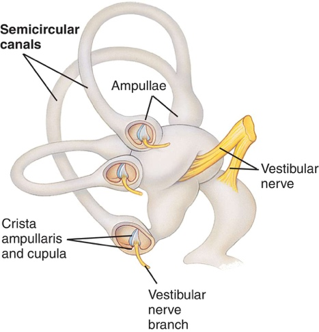Do you experience spinning sensations with movements such as bending over, looking up, lying down or rolling over in bed? You may be suffering from a specific type of vertigo known as BPPV. This type of vertigo is caused by a problem with the inner ear and symptoms are brought on by changes in head position with respect to gravity.
There are three semicircular canals in the inner ear filled with fluid and small organs which are responsible for detecting rotational and linear movement of the head. For example, when you turn around, when you speed up and slow down in a car or when you go up and down in an elevator. When you move your head, the fluid moves in a certain direction against the small organs in the inner ear, which then sends a message to the brain telling you which way the head is moving.
Within the inner ear there are also collections of small calcium crystals known as otoconia. In patients with BPPV, these otoconia have become dislodged from their usual position within the inner ear and eventually migrate into the semicircular canals. Those dislodged crystals are then swirling around in the fluid of the semicircular canals and confusing the normal inner-ear process of detecting movement of the head. This is why you can experience spinning sensations with daily tasks that involve movement of the head in relation to gravity.
But how do we, as Physiotherapists, treat this condition?
We will first perform an assessment technique to confirm that your symptoms are consistent with BPPV. This is quite a rapid movement and can bring on the spinning sensations with or without other symptoms such as nausea. If this technique reproduces your symptoms, we will then perform a manoeuvre that is designed to reposition those dislodged crystals within the correct part of the inner ear. This manoeuvre may be performed several times in one session and you may require several treatment sessions in order for your symptoms to fully resolve. It is important that you trust your therapist and follow their instructions during this treatment in order for it to be as effective as possible. Your therapist may also give you some specific exercises to do at home to help with the process of relocating the dislodged crystals.
BPPV can have a significant impact on quality of life, with the severity of a patient’s symptoms ranging from mild spinning sensations to intense nausea and visual disturbances. Physiotherapy treatment can be very effective in the management of BPPV and has helped many patients return to regular function with very minimal or no ongoing symptoms. Phone us on (07) 5527 7092 to book in a consultation today!

